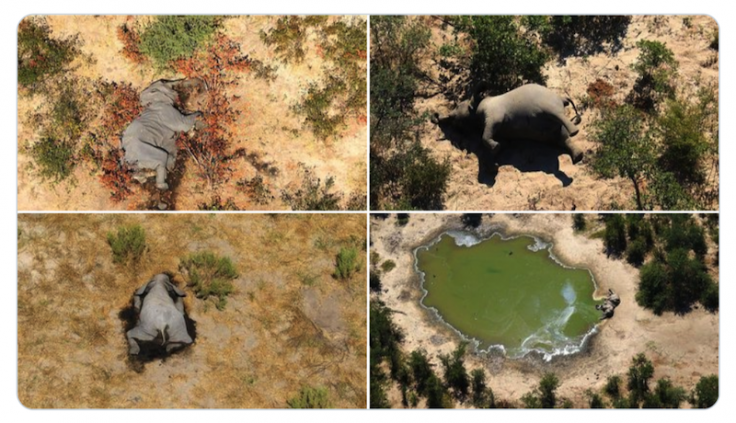More than 350 elephants have died mysteriously in northern Botswana in what scientists are calling a "conservation disaster." The first batch of a dozen elephant deaths was reported in the Okavango Delta region in early May with the tally going up to 169 by the end of the month. By mid-June, the number had more than doubled, with 70% of the carcasses found around waterholes.
"This is a mass die-off on a level that hasn't been seen in a very, very long time. Outside of drought, I don't know of a die-off that has been this significant," said Dr Niall McCann, the director of conservation at UK-based charity National Park Rescue.

Elephants of both sexes have been dying and several other elephants have started falling sick, suggesting more will die in the coming weeks. The actual number of deaths is likely to be higher than reported as carcasses can be difficult to spot, according to conservationists.
Poison or Unknown Pathogen Suspected
The two main possibilities that are being taken into consideration are poisoning or an unknown pathogen. Natural anthrax poisoning, which was responsible for killing 100 elephants in Botswana last year, has also been ruled out.

According to local witnesses, some elephants were seen walking around in circles, which is an indication of a neurological impairment. If you look at the carcasses, some of them have fallen straight on their face, indicating they died very quickly. Others are obviously dying more slowly, like the ones that are wandering around. So it's very difficult to say what this toxin is," said McCann.
McCann also hasn't ruled out the possibility of a disease that may have contaminated the water source or the soil and warned about the virus jumping over to the human population. "Yes, it is a conservation disaster - but it also has the potential to be a public health crisis," he said.
Poachers Not Involved

The tusks of the deceased elephants were not removed, which rules out the possibility of poachers being involved in the deaths. Cyanide poisoning of waterholes, often used by poachers in Africa, was also considered as a possibility but scavenging animals do not seem to be dying around the elephant carcasses. Local reports say there were fewer vultures on carcasses than normal, but none showed signs of abnormal behavior.
Testing of Samples Delayed Due to COVID-19
The Botswana government has not yet been able to test tissue samples due to logistical difficulties stemming from the coronavirus pandemic.
Dr. Cyril Taolo, acting director for Botswana's department of wildlife and national parks, said the global outbreak has impeded the government's ability to get answers. "Covid-19 restrictions have not helped in the transportation of samples in the region and around the world," he said. "We're now beginning to emerge from that and that is why we are now in a position to send the samples to other laboratories."









